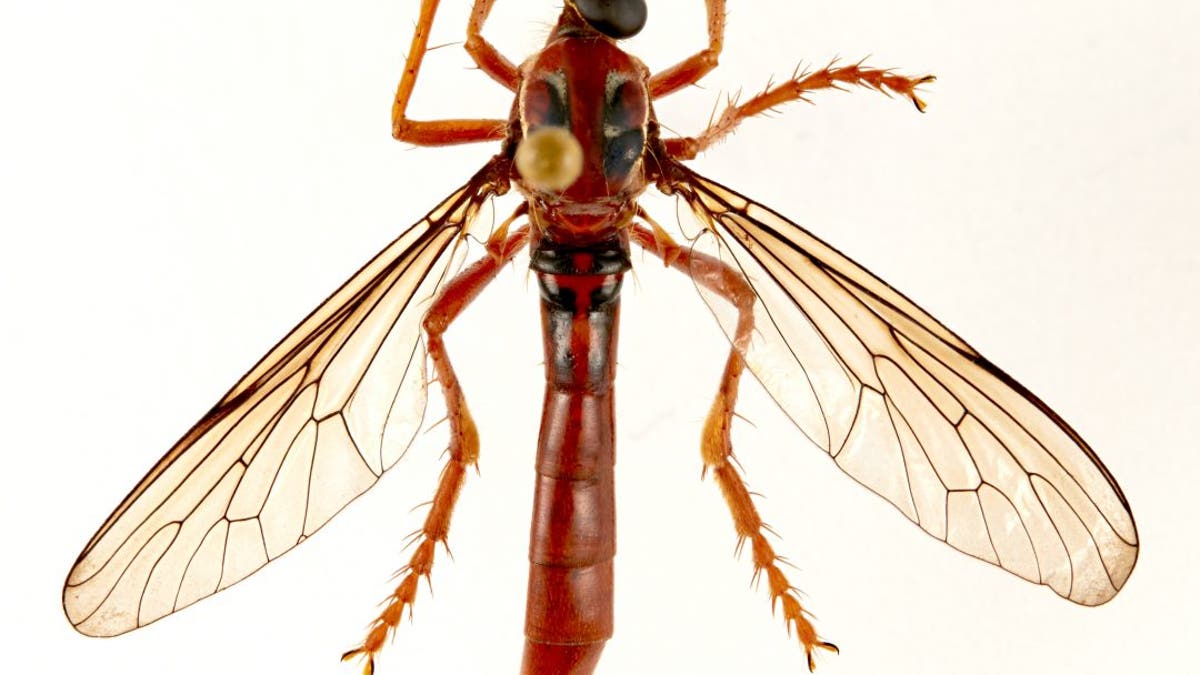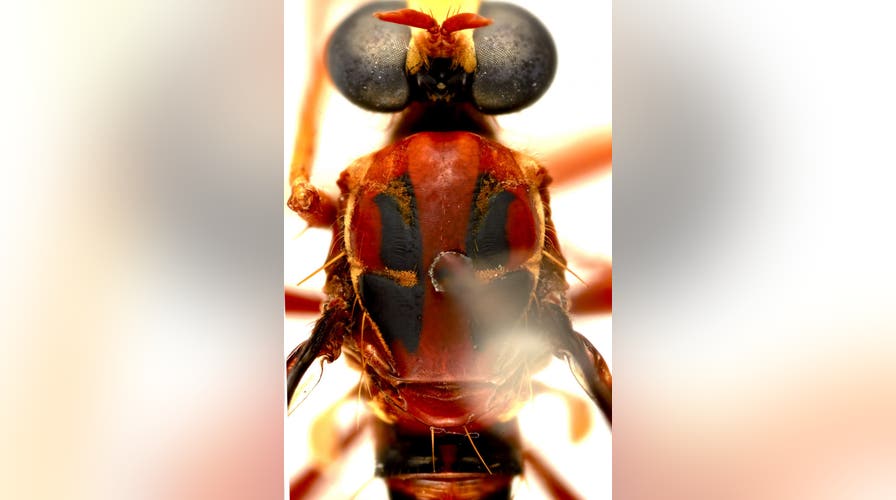Fox News Flash top headlines for August 3
Fox News Flash top headlines are here. Check out what's clicking on FoxNews.com.
Perhaps Disney has found its next superhero movie franchise.
Scientists in Australia have identified five previously unknown species of "assassin flies," naming the insects after several Marvel superheroes, as well as famed comic book writer and creator Stan Lee.
The five species were given the new nomenclature by Australia's federal science agency, CSIRO. CSIRO entomologist Dr. Bryan Lessard said naming the new flies was important, highlighting some of the character traits from the superheroes.

Deadpool fly (Humorolethalis sergius) has markings on its back that resemble Deadpool’s mask. (Credit: CSIRO)

Deadpool fly (Humorolethalis sergius) has markings on its back that resemble Deadpool’s mask. (Credit: CSIRO)
'MURDER HORNET' TRAPPED FOR FIRST TIME IN WASHINGTON STATE, EXPERTS SAY
"Deadpool fly is an assassin with markings on its back that resembles Deadpool's mask," Dr. Lessard said in a statement. "We chose the name Humorolethalis sergius. It sounds like lethal humor and is derived from the Latin words humorosus, meaning wet or moist, and lethalis meaning dead."

Daptolestes leei is a robber fly named after the late comic book creator Stan Lee. It shares his characteristic glasses and mustache. (Credit: CSIRO)
The five flies are known as the following:
- Stan Lee's fly is Daptolestes leei, sharing the late comic book legend's sunglasses and white mustache
- Thor's fly is Daptolestes bronteflavus, which means blond thunder
- Loki's fly is Daptolestes illusiolautus, which means elegant deception
- Black Widow's fly is Daptolestes feminategus, which means woman wearing leather
- Deadpool's fly is Humorolethalis sergius
Stan Lee died in November 2018 at the age of 95.
In addition to the assassin flies, the researchers named several new creatures.
These include two new fish, subspecies of birds and more than 150 insects, including a spider wasp, an insect that has venom "that could be useful for treating Alzheimer's disease and epilepsy," Dr. Juanita Rodriguez said.
The research was published in the scientific journal, Austral Entomology.

